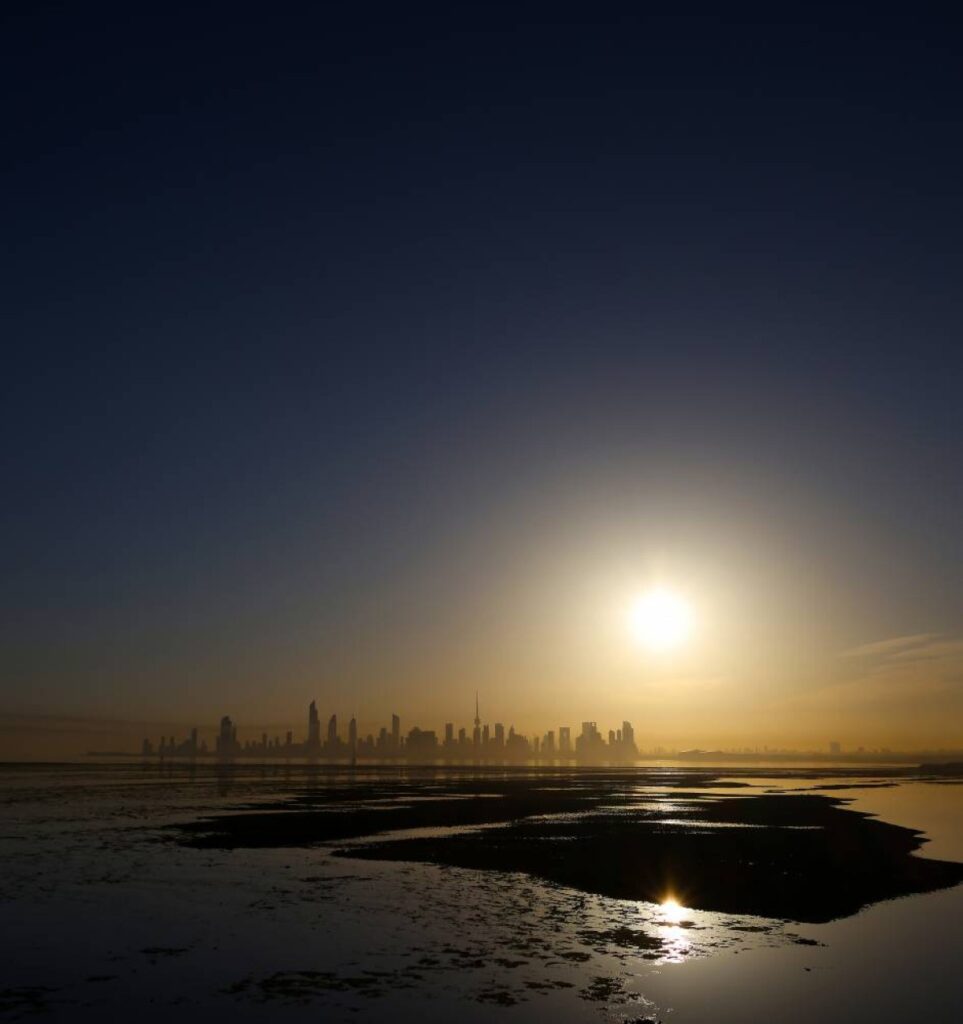By B Izzak & Agencies
KUWAIT: The meteorological department said on Thursday that Kuwait will continue to be affected by an “extreme heatwave” caused by the Indian monsoon depression, accompanied by dry and hot slight to moderate winds, and that temperatures will remain close to 50 degrees Celsius until Saturday.
Temperatures recorded on Thursday ranged between 47 and 49 degrees in remote desert areas and the airport and around mid-40s in coastal areas. Temperatures are forecast to be between 48-50 degrees Celsius during the next two days, and their influence would remain on Sunday. Temperatures will cool slightly to just under 30 degrees during the night, the department said. Sea conditions will be moderate to high, with waves between 3 and 6 feet.
The extreme heat is attributed to the Indian monsoon depression, which has brought a hot and dry air mass over the region, causing a significant rise in temperatures, according to Director General of the Meteorological Department Dharar Al-Ali. Speaking to KUNA, Al-Ali said the weather will be very hot, with northwesterly winds ranging from moderate to active at speeds between 20 and 50 kilometers per hour, likely to stir up dust in some areas.
Global temperatures are stuck at near-record highs this year, according to the EU’s climate monitor, extending an unprecedented heat streak that started in 2023. Kuwaiti weather expert Issa Ramadan described the surge in temperature as “abnormal” and well above its annual average of just around 42 degrees Celsius. Authorities have advised the public to drink large quantities of water and to avoid being under direct sunlight.
The ministry of electricity and water resorted to programmed power cuts for the second day running due to a surge in consumption and as a number of generating units are still under annual maintenance. The cuts affected at least 15 residential areas and 10 industrial and agricultural areas. The cuts are expected to continue over the next two days. Ramadan however expected that temperatures will cool down to their normal annual average early next week.
Summer has come early for Iraq too this year, with temperatures soaring to dangerous levels in the southern provinces on Thursday, the national weather center said. “It is the highest temperature recorded in Iraq this year,” weather center spokesperson Amer Al-Jabiri told AFP. He said the early heat was in contrast to last year, when the temperature was “relatively good” in May and “it only began to rise in June”.
On Thursday, the temperature climbed to 49 degrees Celsius in the provinces of Basra and Missan, and it reached 48 degrees in the nearby Dhi Qar province, according to the weather center. Summer temperatures often exceed 50 degrees Celsius, especially in July and August, and sometimes reach these levels earlier.
On Sunday, two cadets died and others were admitted to hospital with heat stroke at a military academy in Dhi Qar, authorities said. The defense ministry said nine cadets “showed signs of fatigue and exhaustion due to sun exposure” while waiting to be assigned to battalions. Prime Minister Mohammed Shia Al-Sudani ordered an investigation into the two deaths.
Iraq is one of the five countries most impacted by some effects of climate change, according to the United Nations. It has also seen a prolonged drought and frequent dust storms. While the province of Missan is used to scorching summers, environment activist and daily laborer Mustafa Hashem said “the heat started sooner than expected this year”. “One of my colleagues fainted yesterday while we were maintaining cooling equipment on the roof of a building,” he added.

